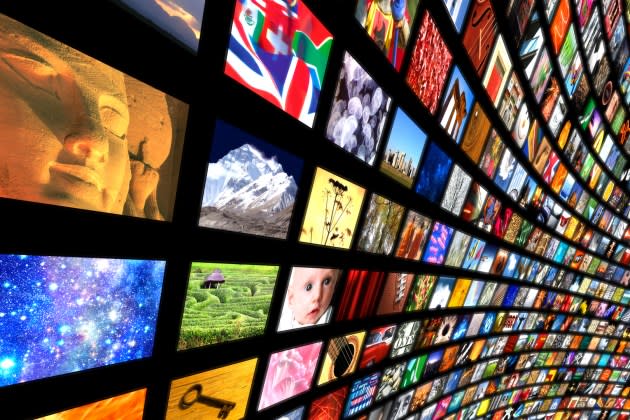TV Networks Fight for Fewer Dollars in Upfront Amid Big Streaming ‘Rollbacks’

If you want to see the latest fire sale, just turn on your TV.
The nation’s big media companies are facing significant headwinds in the industry’s current “upfront” market, when TV networks try to sell the bulk of their commercial inventory for their next cycle of programming. Advertisers are pulling back on the amount of money they wish to commit to TV overall, according to five executives with knowledge of recent discussions, and they are in many cases pressing the networks for significant “rollbacks” on rates, particularly for streaming inventory that is supposed to represent the future of the medium.
More from Variety
Disney Drops Federal Appeal in Florida Lawsuit, Ending DeSantis Fight
'All American: Homecoming' Canceled, Will End After Three Seasons at the CW
Disney EMEA Posts $4.9 Billion Revenue Driven by Streaming, Films
Advertisers have been able to snatch up streaming ad inventory and linear commercial time in deals that call for what is known as “rollbacks,” or reductions in CPMs, a measure of the cost of reaching 1,000 viewers that is central in these annual discussions between TV networks and Madison Avenue. Rollbacks for streaming CPMs have come in at as much as a decrease in the double-digit percentage range, according to these people, while CPMs for some traditional broadcast and cable are off by as much as 4%. Linear TV is commanding some CPM increases, these people say, for sports and tentpole events, that may go up as much as in the mid-single-percentage range.
A glut of new streaming inventory from the ad-supported tiers of Amazon Prime Video, Netflix and Disney+ has goosed supply at a time when demand is not at its most robust, according to the executives. There’s little impetus to rush to buy, these people say, unless the terms are extremely favorable. “It’s my party,” says one media buyer. “I’m not late to anything.”
Disney, NBCUniversal, Paramount and Fox have written significant piece of business, these people say, with Disney being particularly aggressive by offering favorable rates for streaming ads in Hulu and Disney+. Amazon Prime Video and Netflix, however, have not written as much business, as they wait to see if the market will accept what are seen as aggressive CPMs and pricing. Warner Bros. Discovery is said to be a little behind its contemporaries in terms of notching commitments. Publics Groupe’s PMX. Omnicom Group’s OMG and Interpublic Group’s Magna have all written some upfront deals with the networks, these people say, while WPP’s GroupM has in some cases not registered client budgets, researching opportunities more methodically before committing any ad dollars.
Disney, Fox, Netflix and Warner Bros. Discovery declined to make executives available for comment. Spokespersons for NBCUniversal, Paramount, GroupM, OMG and Magna declined to discuss the companies’ upfront negotiations. Amazon was not able to offer immediate comment.
TV sales executives must also contend with some unique challenges from potential sponsors — including themselves. Last year’s Hollywood labor strike has crimped the industry’s pipeline of new material, which means one of the industry’s frothiest ad categories — movies and TV shows from streamers — is less bubbly. Pharmaceutical manufacturers, one of TV’s most stalwart supporters in recent years, owing to the older demographics of current linear TV viewers, are being more cagey in negotiations, according to people familiar with the talks. They are putting more pressure on pricing, these people said, because they are in many cases mandated to run longer commercials — as much as 75 seconds to 90 seconds in length — so they can fully disclose side effects of their various medications. Many companies that make weight-loss drugs are particularly active in this year’s market, according to people with knowledge of talks.
The current market represents the second consecutive upfront in which the traditional media companies have accepted “rollbacks,” typically a dynamic of last resort that only comes into play during severe market recessions. The risk of doing deals at reduced terms is that the better CPMs will never come back — or take years to put into practice once again.
The new tonnage of streaming inventory is crimping the companies’ ability to monetize advertising on them further. “The introduction of ads to Amazon Prime Video — where the ad-tier is now the default option – has led to an explosion in CTV ad inventory, exerting deflationary pressure on CPM across the sector,” said media analyst Michael Nathanson, in a recent research note, adding: “Platforms with the most inventory, least must-have content, and worst targeting capabilities are most at risk.”
Many advertisers want to follow consumers to new streaming venues, but hubs like Max and Hulu are built on the premise that viewers won’t have to wade through the sheer number of commercials they see on traditional TV. Even the ad-supported tiers offered by Netflix, Peacock and others take pains not to run more than a few minutes of commercials per hour, and typically keep ad breaks under lengths of 90 seconds.
All of that has helped boost streaming CPMs in the past. Some buyers have vowed to get streaming CPMs more in line with their linear counterparts — and the companies may have little recourse.
With upfront volume seen eroding, the TV networks will have to rely more heavily on so-called “scatter,'” o ad inventory that is purchased more closely to actual air. Ad commitments in last year’s upfront market for primetime broadcast TV fell 3%, to $9.595 billion, compared with $9.91 billion in 2022, according to Media Dynamics Inc., an advertising consultancy that tracks the market. Cable TV saw even worse erosion, with advertisers committing $9.52 billion for primetime, down 7% compared to the $10.23 billion in commitments secured in 2022.
Best of Variety
Sign up for Variety’s Newsletter. For the latest news, follow us on Facebook, Twitter, and Instagram.

 Yahoo Finance
Yahoo Finance 